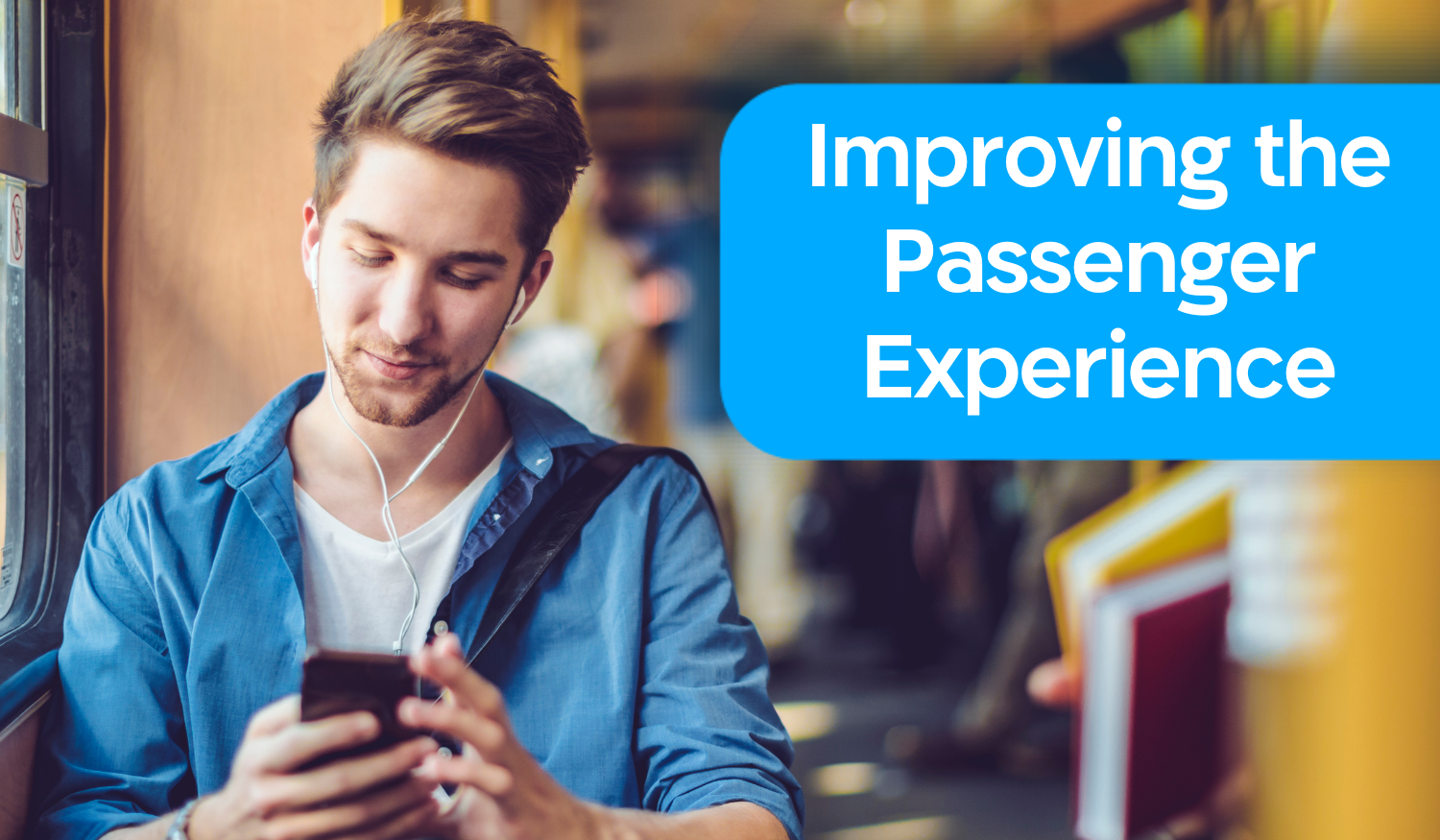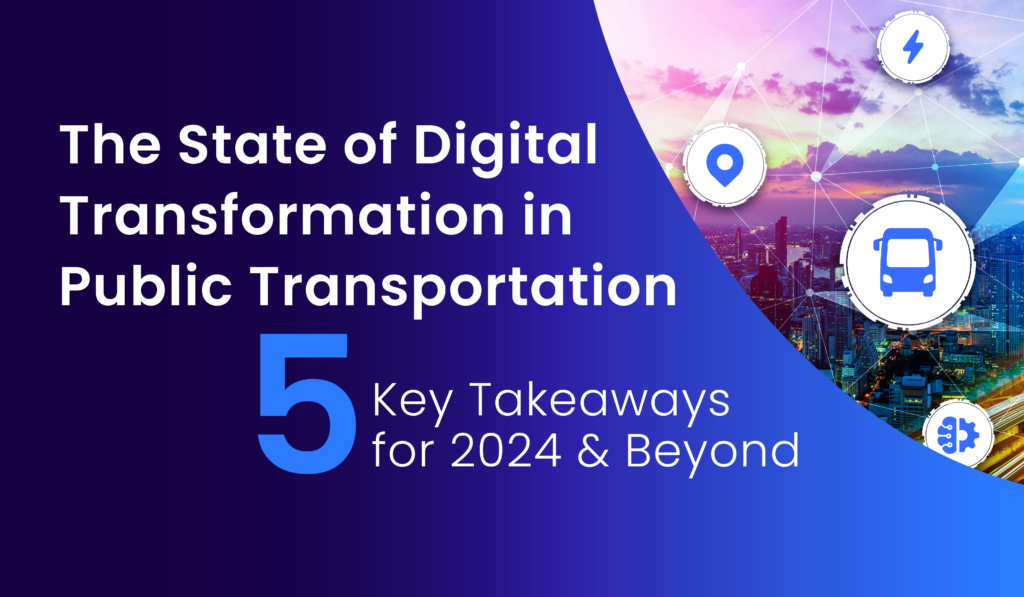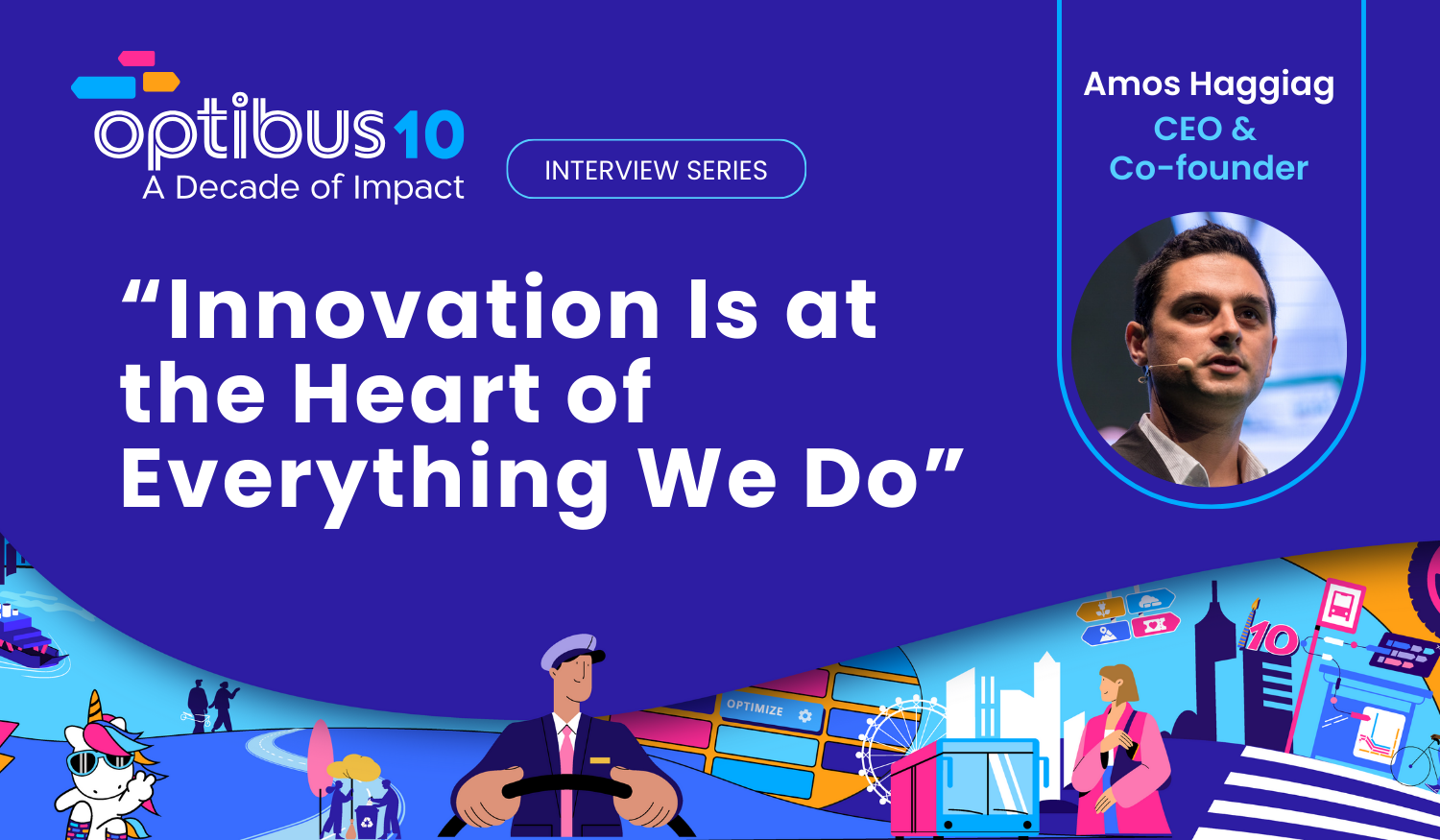 In a recent webinar titled "Public Transportation In 2024: Innovating The Way We Move, Together," a panel of experts discussed the significant advancements and challenges facing public transportation today. The panel featured Ulrike Schandl, Head of Bus Transport Planning at Dr. Richard Group; Seyi Osiyemi, General Manager of WeDriveU in Charlotte; Elliott McFadden, Greater Minnesota Shared Mobility Program Coordinator at Minnesota Department of Transportation; and Craig Nelson and Leslie Langley from Optibus. A link to the recording can be found here.
In a recent webinar titled "Public Transportation In 2024: Innovating The Way We Move, Together," a panel of experts discussed the significant advancements and challenges facing public transportation today. The panel featured Ulrike Schandl, Head of Bus Transport Planning at Dr. Richard Group; Seyi Osiyemi, General Manager of WeDriveU in Charlotte; Elliott McFadden, Greater Minnesota Shared Mobility Program Coordinator at Minnesota Department of Transportation; and Craig Nelson and Leslie Langley from Optibus. A link to the recording can be found here.
The State of Public Transportation Post-Pandemic
Reflecting on the current state of public transportation, the panelists emphasized the significant changes and recovery efforts post-COVID-19. Ulrike Schandl noted, "The trust in public transportation is back. We have climate tickets in Austria, that means low priced annual tickets, valid in almost the whole public transport network....but we often have the challenge that the supply of public transport or infrastructure is missing." Elliott McFadden echoed these sentiments, highlighting the ongoing struggle in the U.S. to return to pre-pandemic ridership levels and the financial pressures resulting from reduced fare revenues. McFadden added, "Many agencies have been dealing with what we call the fiscal cliff, which is how to make up that revenue in many cases."
Adding to this, Seyi Osiyemi discussed the broader impacts of COVID-19 on the public transportation sector. "While Covid is done, it has basically displaced the entire public transport network," he said, emphasizing that many cities still trail 30% behind pre-pandemic ridership levels. This has created significant pressure on revenues and raised concerns about long-term sustainability and recovery.
Digital Transformation and Innovation
A major theme of the discussion was the digital transformation within the public transportation sector. The adoption of new technologies and data standards is crucial for enhancing service delivery and operational efficiency. McFadden shared insights on Minnesota's efforts: "We implemented the general transit feed specification or GTFS...to bring both urban and rural transit into the digital space in Minnesota." This move towards a more integrated digital platform is aimed at improving accessibility and service efficiency.
Craig Nelson expanded on the benefits of digital innovation, particularly in terms of passenger information. "One of the things that really did impress me was how pretty much every transit agency has GTFS available," Nelson said. This open data approach has enabled a range of applications that improve passenger experience, from real-time tracking to integrated payment systems.
Adding to this, Schandl emphasized the importance of data and cybersecurity in the new digital world. "In the new digital world, the impact can be far-reaching as we are all increasingly dependent on network-based operational control," she noted, stressing the need for robust cybersecurity measures to protect critical infrastructure.

Addressing Driver Shortages and Safety Concerns
Driver shortages and safety concerns were identified as critical challenges. Seyi Osiyemi detailed efforts in Charlotte to improve driver retention through better pay and safety measures. He stated, "We've increased the pay rate of the drivers...we've actually been rolling out de-escalation training for our drivers." These initiatives aim to create a safer and more attractive working environment for drivers.
Ulrike Schandl highlighted the broader impact of these challenges on the overall public transportation system. "Driver satisfaction and retention is our daily business," she said, emphasizing the need for balanced duties and adequate break times to improve driver well-being and job satisfaction.
Elliott McFadden pointed out another dimension of the issue: the need for smaller, more flexible vehicles in rural areas. "We are seeing, especially in rural transit, a push for smaller, more flexible vehicles as well," he said, noting that these vehicles can be easier to operate and may help address driver shortages in certain contexts.
Training and Development
Training emerged as a critical factor in the effective implementation of digital transformation and operational improvements. Ulrike Schandl stressed the importance of personalized training programs. "The willingness to learn is a basic requirement for everybody," she said. Schandl emphasized that training needs to be tailored to the needs of individuals, which has a huge impact on their sense of responsibility and identification with their work. She added, "We have to admit that we also see the need for more specialized staff who need to be recruited for the specialized New World."
Seyi Osiyemi shared insights on managing operational risks during digital transitions, drawing from his experience in Kuwait. He highlighted the importance of ensuring minimal disruption to customers while transitioning from older systems to newer, digital solutions. "Digital transformation is always a big thing, but you need to ensure that you're deploying a system that is fit for your environment," he said, underscoring the importance of a strategic approach to training and implementation.
Sustainability and Electrification
The panel also discussed the push towards electrification and sustainable practices in public transportation. Schandl mentioned Dr. Richard's adoption of HVO 100, a renewable fuel, to reduce CO2 emissions. Osiyemi highlighted Charlotte's plan to have a fully electric bus fleet by 2030, although he acknowledged the infrastructure and cost challenges associated with this transition. "The City Council actually made a decision that any subsequent procurement will be either electric or hybrid," he explained.
Expanding on this, Schandl discussed the role of alternative fuels in the transition to greener public transportation. "We use a renewable and sustainable synthetic fuel called HVO 100 for our Diesel buses...this is completely made of organic food waste and therefore fossil-free," she noted, emphasizing the significant reduction in CO2 emissions this fuel can achieve.
Craig Nelson also highlighted the importance of government support in the transition to electric vehicles. "In the UK, there are lots of grants and money available for private companies to either lease or buy vehicles," he said, pointing out that similar support could help accelerate the adoption of electric buses and other sustainable technologies.
To support the transition to electric buses, we offer guidance based on our experience. You can find our electrification checklists here: Your Path To Accurate Planning And Seamless Transition.

Looking Ahead: Opportunities and Challenges
Looking to the future, the panelists identified significant opportunities in the convergence of automotive and transit technologies. McFadden sees a potential for greater integration and efficiency: "As more and more technology gets incorporated into vehicles...there'll be a drive for vehicles to be shared or to move to fleet vehicles." However, the challenges of right-sizing public transit and ensuring competitive service delivery remain. Schandl emphasized the need for a mindset shift among the public to favor public transport over private vehicles.
Seyi Osiyemi pointed out the potential for autonomous vehicles to address driver shortages and reduce operating costs. "The introduction of autonomous vehicles in the public bus system is probably an opportunity," he said, noting that while this technology has yet to take off widely, it holds significant promise for the future.
Craig Nelson concluded by emphasizing the importance of continued investment and adaptation. "Public transport is the future. Still, a lot of work to do, but with people like yourselves and everyone that's here working hard, I'm sure it'll be successful," he said, highlighting the collective effort needed to realize the potential of public transportation in 2024 and beyond.
In conclusion, the webinar highlighted the dynamic landscape of public transportation in 2024, characterized by digital innovation, sustainability efforts, and ongoing challenges in ridership and safety. The insights and strategies shared by the panelists underscore the importance of continued investment and adaptation to create a more efficient, reliable, and eco-friendly public transportation system for the future.
To learn more about how our platform can help solve these challenges, from digital innovation to implementing EVs to creating schedules that suit drivers' lives, visit our product page.


.png)




